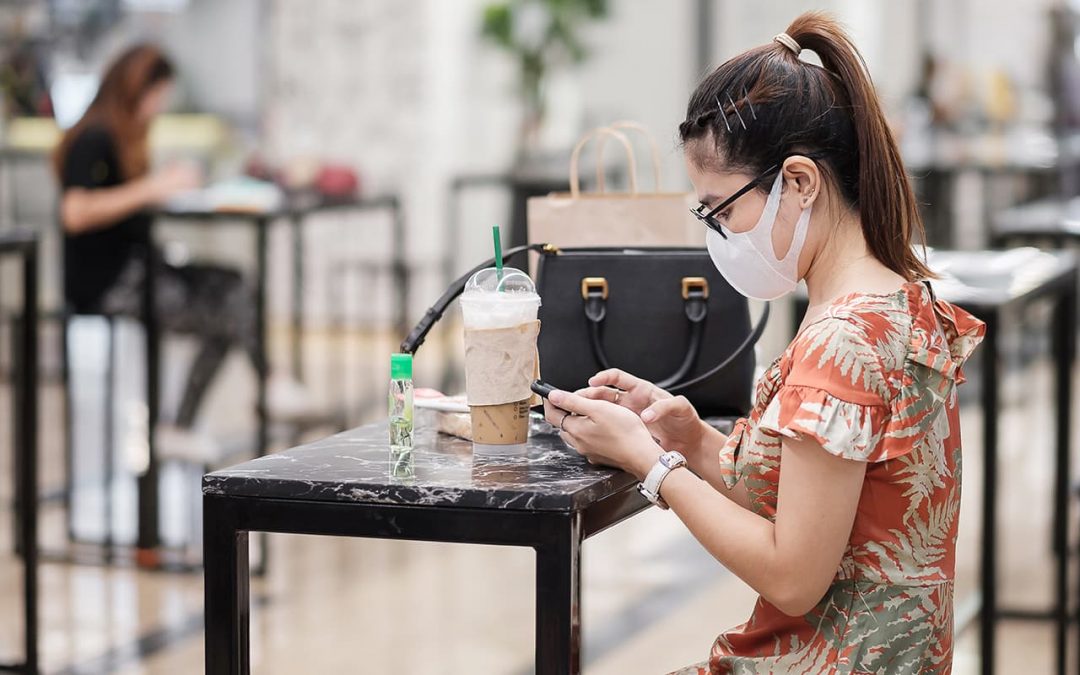Look Away!
It’s quite likely that you’re looking at this newsletter on your smartphone right now. Otherwise, you’re reading it on a laptop screen or your desktop computer monitor. All that screen time can be really irritating – and not necessarily because we disagree with what we read.
As you’ve already read, more than half of people who spend extended time in front of computer screens – and that includes mobile devices – experience digital eye strain. The irritation is believed to be caused by overexposure to the high-energy visible spectrum of light called “blue light” which is emitted by nearly all digital device screens. Blue light has a wavelength of 380 nm to 500 nm, which means it is one of the shortest, highest-energy wavelengths that humans can perceive.
Our eyes are not good at blocking blue light. Nearly all of it passes through the cornea and reaches the retina. It’s believed that excessive blue light may increase macular degeneration and cause permanent vision loss. Scientific studies are still underway, but it’s believed that the damage blue light causes to retinal tissue has contributed to a worldwide increase of nearsightedness. In the UK alone, more than 16 percent of people under the age of 18 are nearsighted, versus slightly over 7 percent of that age segment in the 1960s.
Little actions make a big difference
If you’re already having difficulty making out what’s on your mobile device’s screen because of eye strain, trying to compensate for it may make it even worse. Under normal circumstances, we blink our eyes about 15 times each minute. Staring at our smartphone reduces our blink rate by more than half. Also, as we lean closer to the screen, we’re tightening facial, neck, and shoulder muscles. Often this is what’s contributing to a headache.
Blue light can cause other types of physical disruption for us, too. It can impact your sleep patterns by decreasing melatonin levels, which makes it more difficult to fall asleep and then stay asleep.
This is alarming to medical professionals, but they’re smart enough to know we wouldn’t listen if told to just stop using computers and smartphones. Instead, they simply want us to practice restraint.
The 20-20-20 Rule
Take regular breaks from your digital screens about every 20 minutes. After that time, stare at something at least 20 feet away for at least 20 seconds. The 20-20-20 rule helps to rest your eyes and gives you a break from the muscular strain which most likely is the cause of your headache.
Not all blue light is bad. We need a certain amount of it to regulate our natural wakefulness and sleep cycles, which is known as the circadian rhythm. Blue light therapy is also being used to help treat depression caused by seasonal affective disorder (SAD). Appropriate amounts of blue light boosts alertness, elevates our mood, and even can help with cognitive function and memory.
So think twice before you pick up your smartphone – especially in low light environments or after sunset. That tiny screen can be a big contributor to eye problems.
Our concern for eye health is one of the reasons why we strongly recommend that restaurants think twice before deciding to reduce their menus down to the size of your smartphone screen. Health concerns have driven many restaurants to take this action, and it most definitely is an option to help keep their patrons safer.
But there is another option, and it’s one that’s both cost effective and kinder to our eyes. We offer a variety of ways to add protective coatings to menus which allow restaurants to quickly and inexpensively disinfect them after each use. It’s kinder to the eyes, you can make your menu any size, and your customers don’t have to worry about battery or signal strength!
We’d Love to Connect with You!
Contact the Vinyl Art Team at 800-569-1304 or sales@vinylart.wpengine.com


